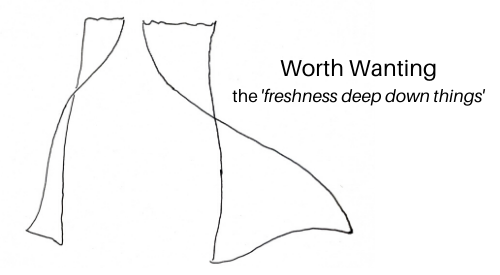
Encounters are so various in kind and content that the adventure is never-ending.
Making common cause with the livingness of an other addressed as you: there are innumerable ways we can do this. The heart of making of common cause–from mutual acknowledgement to mutual aid–is the ethos of frexhos: friendship, exploration and hospitality.
Hospitality may include making welcome or offering provision or entertaining or teaching or any number of other interactions. Friendship may involve visiting, helping, gift-giving–again, as many forms of expression as there are occasions for friends to meet. And exploration? Querying, investigating, observing… The history of science, for instance, is a history of modes of exploration.
Our readiness to adopt one or several ‘roles’ in any of the different kinds of common cause interactions is our ‘stance of solidarity’, a stance because it’s poised, solidarity because it’s based on the principle that what’s good for the one ultimately is good for the other.
How does frexhos play out within any encounter as it occurs? Apart from the stance of solidarity, is there a style of solidarity? What happens in an encounter is spontaneous, unrehearsed, intrinsically motivated. The style of its solidarity is unique to each occasion, and each of us has a particular style of interaction. There are some general principles, however, whether the encounter is with one other, or together with an other with one other to both (freshness participant in both) or with freshness itself directly. These principles are revelatory readiness and inviting attentiveness, or simply, talking and listening, willingly, seriously, and consistently.
Revelatory readiness is nothing more than being willing to open up, to share, to disclose. Just being present involves disclosure; we expose ourselves to observation. But beyond that, we share our minds and hearts, not secrets, but simply our experience of being alive.
Encounterers share with one another their lines of thought, those sequences of ideas which lead (or might lead) to satisfying conclusions. Lines of argument, the steps of creation, extended processes and instructions, all of these which start here and end there, need to be presented beginning to end to be appreciated for what they are and what they represent to and about the thinker. Lines of thought are an important part of our self-presentation in encounters, and the hospitality of an encounter-mate listener means patient and perceptive attentiveness.
Encounterers also share their dramas of livingness, those incessant dynamics within us of certainty vs. doubt, trust vs. suspicion, noticing vs. ignoring, compounded by ambivalences, ambiguities and dilemmas. A freeze-frame of any moment of our lives would show these affairs in a certain state. A moment later, everything would be a little shifted, like clouds in the sky, and affecting the quality of light, louring or limpid, representing our moods and feelings. Our dramas of livingness represent the experience of being ourselves, and the appropriate style of solidarity is generous, sympathetic, friendly listening.
Encounterers also share with one another their perceptions of what they’ve seen, or see, or see together. Looking closely at the details of particular things, distinguishing clearly between similar or nearby things, comprehensively listing the constituent parts of things, encounterers explore their common world (or make common what they explore). Let’s look closer at what’s there. What do you see? What can you see that I can’t? What have you picked up that I’ve missed?
One listening to another answer such questions is exploring not only something shared by both, but also the mind of the other and of oneself.
Related to this, I was reading recently a long (44 stanzas) poem, The Eyes, new to me, of a poet I profoundly respect: Mark Van Doren, Any poem, like any creation, is the product of a line of thought. It’s also true, and I could sense it clearly in this work, that it depicts a particular subtle and complex drama of livingness. And technically the poem is impressively adept, both poetically and syntactically. As I read it, reread it, look forward to reading it again, the question kept presenting itself to me: what was the original impulse behind this work of creation? And what about that first impulse determined the shape and size of the finished work?
This led to another question. Shouldn’t I ask the same question of all other poems, and indeed of all kinds of other creative products? Critical evaluation that focuses on context or content may need also to consider the impulse occasioning the very act of creation: the conception, the sitting down at the desk, the draft, the revisions, the touchstone criteria of adequacy that guide the choices of what next and what not, or even whether to carry on at all, and when to stop.
All of this pertains to my personal style of solidarity, and in particular, to the quality of my inviting attentiveness. Still so much to learn.
